Trump’s lone border visit foreshadowed his flawed vision for a wall
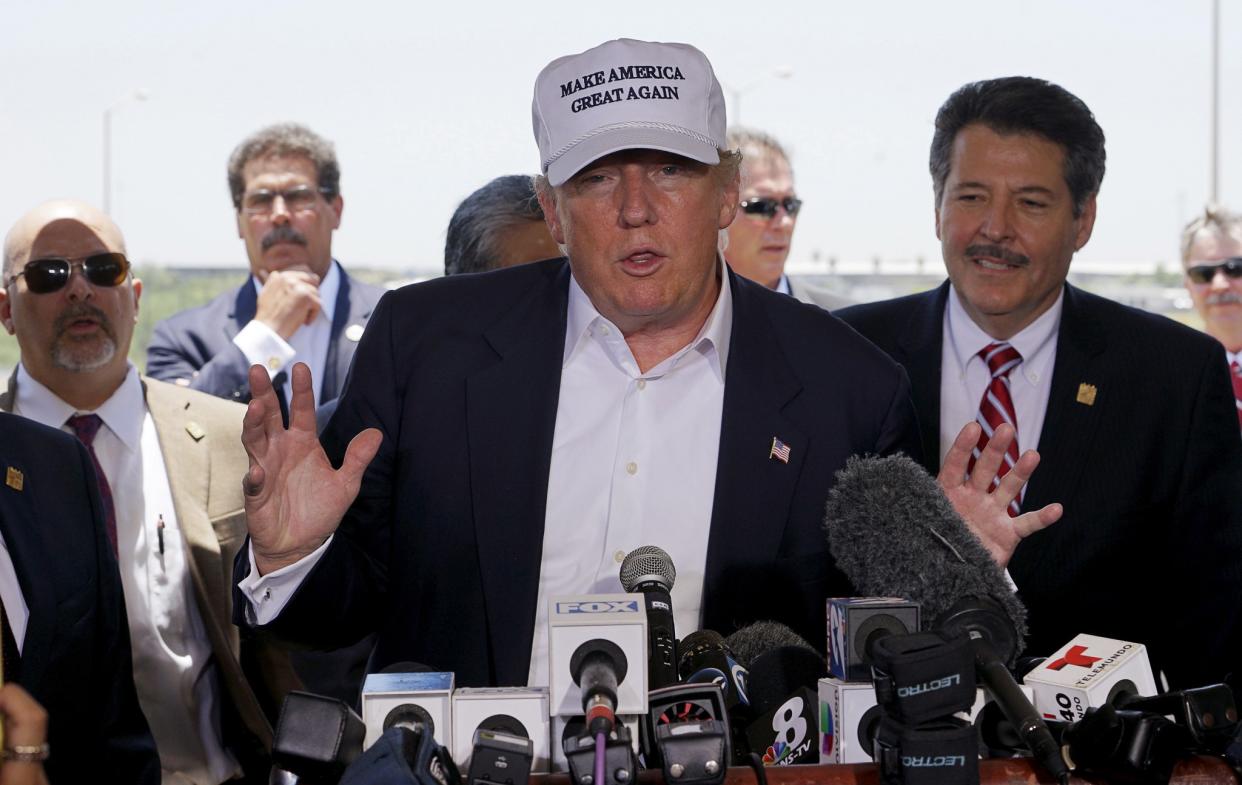
LAREDO, Texas — Donald Trump’s Boeing 757 had landed a few minutes earlier on a remote runway of the local airport here in this dusty border town, and as his guests boarded the aircraft to meet him, they found the New York billionaire in the plane’s gold-accented cabin watching coverage of his arrival on television, which was already steeped in drama.
It was July 2015, a little over a month after Trump had officially launched his bid for the Republican presidential nomination. In his announcement speech, Trump had vowed to “build a great wall” along the U.S. border with Mexico, accusing the nation’s southern neighbor of “sending” bad people across the border, including “rapists,” drug dealers and other criminals. Now after weeks of controversy over his comments, especially among Hispanic voters, Trump had come to see for himself the dangerous frontera he had heard so much about, mostly through the talking heads of cable TV.
Trump seemed anxious about the trip. In a television interview the night before with CNN’s Anderson Cooper and later with “Fox & Friends,” the former reality star had previewed his visit to Laredo, casting himself as someone bravely willing to put himself at risk to see a region that he likened to a war zone. “I may never see you again, but we’re going to do it,” Trump told Fox News.
The National Border Patrol Council, the union representing Border Patrol agents, had been scheduled to give Trump a tour of the border in Laredo. But it abruptly canceled after the candidate was already in route — citing concerns that the event would be tantamount to a political endorsement. On the ground, Trump aides scrambled for replacement tour guides, eventually wrangling Laredo Mayor Pete Saenz and Jesus Olivares, the city manager, who raced to the airport to meet the former reality star turned presidential contender.
On his plane just a few miles from the border, Trump seemed nervous as he greeted his newly recruited tour guides. As Saenz recalled in a recent interview, the first thing Trump asked upon meeting him was whether it was safe for him to be in Laredo.

“Are you sure it’s safe for me to get down?” Trump asked, about disembarking his plane.
Briefly taken aback by Trump’s genuine sense of danger, Saenz told Trump he’d seen a few protesters gathered near the airport’s fence. With a heavily Hispanic population and voter rolls that tended to favor Democrats, Laredo was decidedly not Trump country, but the city had assembled a motorcade of local police to back up Trump’s personal security. “You may have some people yell at you,” Saenz told Trump with a smile. “But I think you will be OK.”
Recalling the moment nearly two years later, Saenz, a Mexican-American and registered independent who broke with many of his family, friends and colleagues to vote for Trump last November, chuckled. “In his mind, I think he really thought there was danger,” he said.
Trump’s trip to Laredo nearly two years ago marked his first and only visit to the U.S. border, even as his pledge to build the “big beautiful wall” became one of the iconic promises of his unlikely path to the presidency. Now nearing the 100-day mark of his time in the White House, Trump is struggling to deliver on his vow to build a wall amid skepticism from members of Congress over the price and scale of the project.
Trump’s visit to the border that summer foreshadowed many of the problems he now faces in selling lawmakers on the wall. And like misplaced fear for his own safety, those problems are rooted in a yawning gap between perception and reality about what exactly is needed to secure the nation’s southern border.
A Department of Homeland Security report in February estimated that Trump’s proposed wall would cost at least $21.6 billion to build — though Senate Democrats, in a separate report released last week, put the cost at roughly $70 billion. Trump has repeatedly said Mexico would pay for the wall, but this week the White House made a last minute push to add funding for the project in a short-term budget measure that must be passed by Congress by this Friday to avert a government shutdown.
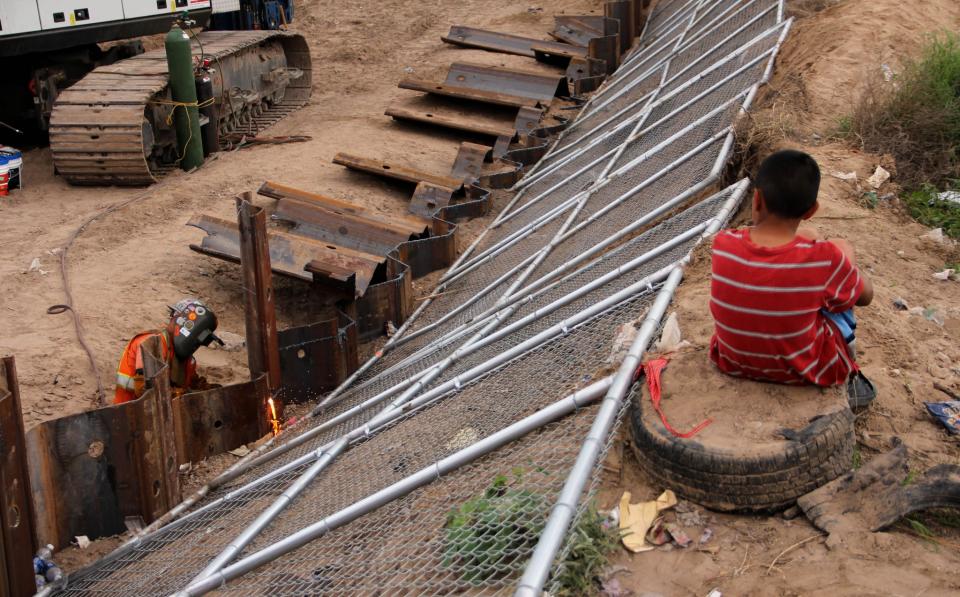
White House officials defended the budget request by saying Mexico would eventually pay for the wall, as Trump repeatedly promised on the campaign trail — though Mexican officials reiterated this week, as they have since 2015, that they have no intention of doing so.
Late Monday, amid complaints from fellow Republicans, Trump dropped his budget request for the wall, saying he would ask for funding again in September when Congress is set to take up another budget bill. “Don’t let the fake media tell you that I have changed my position on the WALL,” he wrote on Twitter Tuesday, defending his decision to step away from the funding request. “It will get built and help stop drugs, human trafficking etc.”
Yet the political opposition to Trump’s wall seems unlikely to change. Even many Republicans, especially those who represent border areas, don’t agree with the idea of a wall as Trump has pitched it: a giant concrete structure that he has often joked gets taller the more Mexico complains about it. Instead, they have argued that the money would be better used to hire more Border Patrol agents and install more reinforced steel fencing. They are also arguing for money to be put into more digital surveillance efforts, like drones and cameras, which have proved successful in deterring migrants and drug traffickers along parts of the border where they are being used like El Paso, Texas, and near Yuma, Ariz.
But those pressing for a different approach to a border wall have run up against a president who has not fundamentally changed his views on the border since the early days of his presidential campaign. His views seem impermeable to widely held truths about the border, including statistics that show a drop in crime. Trump has spent almost no time there, and his opinion appears to have been shaped less by the reality on the ground and what local officials say than by ominous, fear-driven headlines in the media and the views of hardline conservatives like Attorney General Jeff Sessions, who has long argued for the kind of wall Trump is asking for.
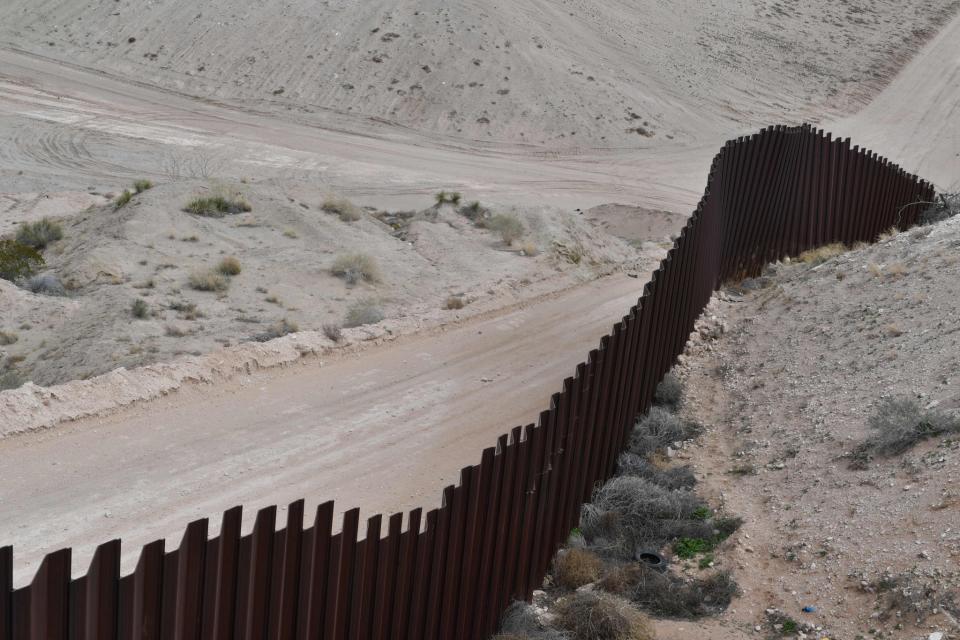
The challenges Trump now faces in pushing for his wall — and the struggle his opponents are having influencing his controversial policy — could all be seen in that lightning-quick trip to Laredo back in 2015. Saenz and other officials spent their face time with the candidate trying to explain why a one-size-fits-all approach to the border wouldn’t work in their city or on other parts of the border.
“I don’t think anyone who lives in a border town is against the idea of immigration reform and making the border more secure. We want that, but it’s the approach that people have a problem with,” Saenz said. “Aside from it being totally offensive to Mexico, which is an important trading partner for us, a big monstrous wall is not practical. It costs too much, and it’s not practical here in Texas.”
Building a wall along the border is not as easy as it sounds — especially in Texas, where the terrain is more complicated than other parts of the roughly 2,000 miles of border shared between the U.S. and Mexico. More than half of the border — 1,254 miles — runs through Texas.
Because of environmental laws and existing U.S. treaties, the existing border fence in Texas sometimes runs miles north of where the country’s actual border with Mexico exists. That has some worried that Trump’s proposed concrete wall could potentially cut off U.S. neighborhoods near Brownsville, Texas, that currently sit on what is the Mexico side of the existing U.S. border fence.
Lawmakers also worry that the concrete wall envisioned by Trump could potentially dam up the Rio Grande, which winds its way along much of the border. The river is a lifeline for residents and is often used as a source of water for livestock on the many ranches that line Texas’ border with Mexico.
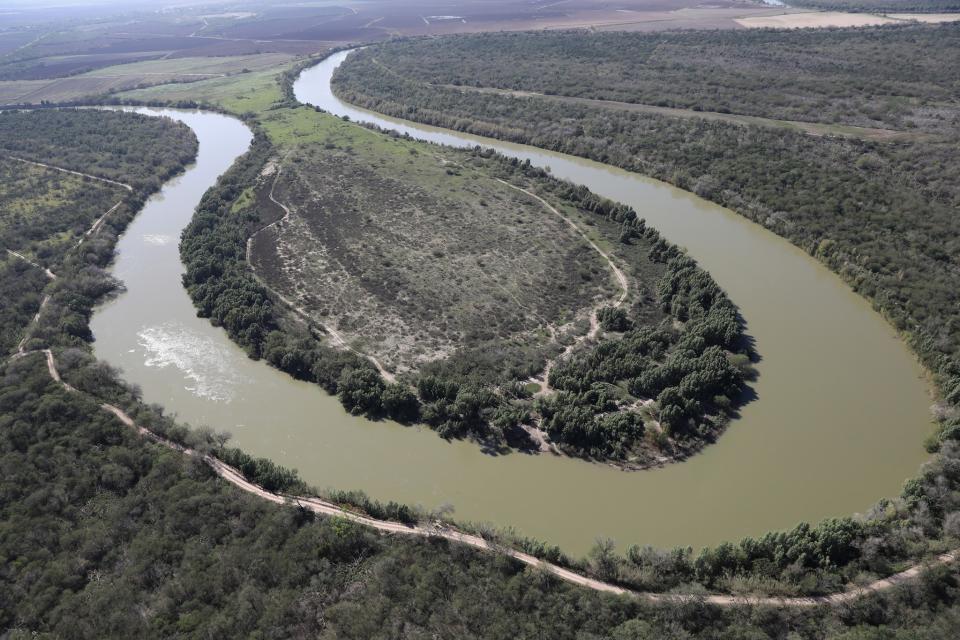
Texas lawmakers — both Democrats and Republicans — have also raised concerns about a concrete wall being built through the rolling canyons of Big Bend National Park, which runs along the border just east of El Paso and is widely considered one of the most beautiful natural landscapes in the country. “It would be like building a wall straight through the Grand Canyon,” one Republican official, who declined to be quoted by name griping about Trump’s approach to the border, told Yahoo News.
Back in 2015, Saenz spent 40 minutes in a car with Trump as he and City Manager Olivares gave the candidate a tour of the border as it runs through Laredo. They showed him existing fencing south of the city’s downtown area, dividing it from Nuevo Laredo, its sister city south of the border, which has struggled with gang violence. The fence, installed several years ago, had proved to be a successful deterrent to illegal immigrants trying to get across the border and to crime. As was the case elsewhere on the border, illegal crossings had been on the decline for several years, Saenz told Trump.
While Saenz said he felt “obliged” to be a friendly host to Trump, he went into the meeting offended by some of the candidate’s statements on Mexico and the border, and he bluntly told him so, spending much of the car ride explaining how working with Mexico on trade and security issues was important for his city.
In addition to lobbying against a concrete wall, Saenz delivered an impassioned defense of the North American Free Trade Agreement (NAFTA), which Trump has repeatedly criticized as the worst trade deal ever negotiated and has vowed to overturn — words that have caused anxiety among officials in Laredo and other parts of south Texas that benefit from trade with Mexico.
With a population of roughly 255,000 people, Laredo is the busiest inland port in the U.S., with more than half of all trade between the U.S. and Mexico coming through it last year — adding up to an estimated $525 billion in imports and exports. He took Trump to the World Trade Bridge, where more than 5 million freight trucks cross each year, and argued that overturning NAFTA would likely turn his city and other parts of south Texas into ghost towns.
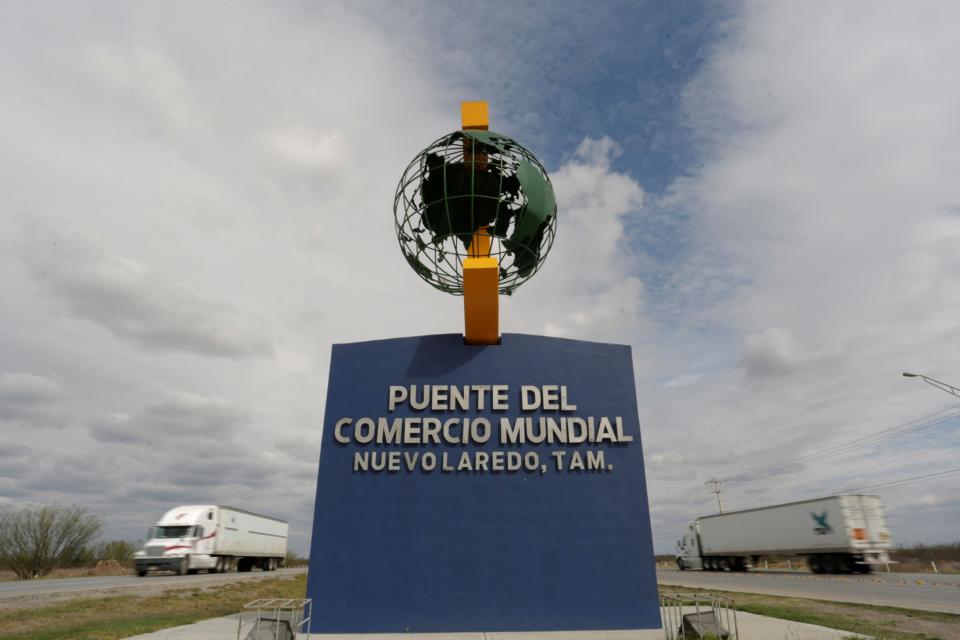
As Saenz pressed Trump, he was pleasantly surprised at how different the candidate was in person from the blustery candidate he had seen on television. “He was engaged and attentive and asking a lot of questions,” Saenz recalled. “He was really listening. He did not seem at all to be the Donald Trump that I had expected to meet.”
During the border tour, Trump asked Saenz if he knew if Mexico had a policy, direct or indirect, of sending “bad guys” over the border into the U.S. The mayor told him he’d never heard of such a policy. Trump said he’d heard the story from a Border Patrol agent.
Before they ended the tour, Trump signaled to the mayor that he was open to negotiation on his proposed border wall. Maybe a concrete wall running along the entire border wouldn’t work, the businessman-turned politician told him, according to Saenz. Maybe there would be sections where there was fencing and different kinds of surveillance. “I was really encouraged,” Saenz said.
But when Trump bounded out of the car to hold a press conference, it was a different story. The candidate spoke of the “great danger with the illegals… a tremendous danger with illegals coming in” and reiterated his call for a wall that Mexico would pay for.
When Oliviares told reporters the city of Laredo did not think a wall was “necessary at this time,” Trump still tried to find agreement, noting that Laredo was just one section of the border. “In certain sections, you have to have a wall absolutely,” he said.
“And by the way,” Trump added with a nod to his hosts, “the wall will save you a tremendous amount of money.”

Trump’s appearance that day won him at least one supporter in heavily blue Laredo. Saenz came away from his meeting with the eventual GOP nominee convinced that his rhetoric and bluster on the campaign trail was part of a public persona and not who Trump would be in the White House. And last November, he cast his vote for the former reality star — though he acknowledges that he wasn’t fully happy with either candidate on the ballot.
But in the months since, he’s wondered if he made the right choice. In his first three months at the White House, Trump has not backed off his proposal for a massive concrete wall. A call for bids due this month on the project suggested the first phase of construction would begin near El Paso, with a second phase in other parts of Texas, including Laredo — though members of Congress, including Texas Sen. John Cornyn, have signaled they would not support the project as currently pitched by Trump.
Still, sitting in his office on a recent afternoon, Saenz said he was disappointed that Trump has not been more open to policy input from local officials like him. “In some ways, he’s an enigma,” he said. “I still give him the benefit of the doubt and I want him to succeed because he is our president, but he keeps disappointing me [on the wall].”
“I don’t know why,” Saenz added, with a laugh. “He’s doing exactly what he said he was going to do. It shouldn’t catch us by surprise. I shouldn’t be shocked, but I am.”
_____
Read more from Yahoo News:



